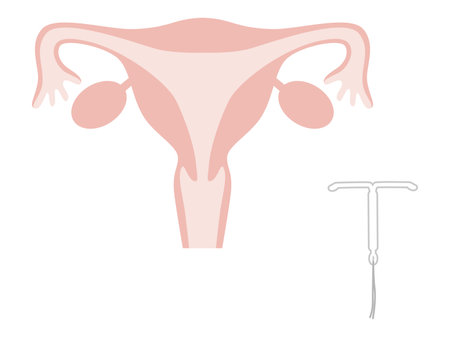1. Historical Beginnings: The Origins of Thread Lifts in Britain
The journey of thread lift procedures in Britain is rooted in a fascinating intersection of medical innovation and shifting aesthetic ideals. Emerging in the late 1990s and early 2000s, thread lifts were initially viewed as an avant-garde alternative to more invasive surgical facelifts. British practitioners, always keen to balance subtlety with sophistication, were among the first in Europe to experiment with these minimally invasive techniques. Early adopters included renowned cosmetic surgeons in London’s Harley Street district, who drew inspiration from pioneering research abroad yet tailored their approach to suit the understated elegance favoured by British patients. At this time, the UK’s beauty landscape was marked by a desire for natural enhancement—a soft rejuvenation rather than dramatic transformation. Influenced by both the reserved nature of British culture and a growing appetite for self-care, thread lifts found their niche among those seeking discreet refinement without lengthy downtime. This early period was characterised by curiosity, cautious optimism, and a willingness to embrace new methods that promised to harmonise with traditional British sensibilities.
2. Aesthetic Shifts: Changing British Beauty Ideals
When exploring the evolution of thread lift procedures in Britain, it is impossible to overlook the profound influence of shifting beauty ideals on aesthetic preferences and medical trends. Over the past several decades, British standards of beauty have undergone remarkable transformations—each era shaping its own definition of youthfulness and facial harmony. These evolving ideals did not just influence fashion or makeup, but also deeply affected the kinds of cosmetic enhancements people sought, paving the way for non-surgical solutions like thread lifts.
Historic vs. Contemporary British Beauty Ideals
In the post-war years, classic British beauty was often synonymous with subtlety, modesty, and a certain understated elegance—think of icons such as Audrey Hepburn or Julie Christie. Soft contours, natural lines, and an almost effortless grace were celebrated. However, as globalisation expanded and media influences diversified, British aesthetics began to shift towards more defined features and visible signs of youthfulness.
Changing Preferences Across Decades
| Decade | Preferred Beauty Ideal | Facial Enhancement Trends |
|---|---|---|
| 1960s-1970s | Natural, minimal intervention | Skincare routines, light make-up |
| 1980s-1990s | Youthful vibrancy, sharper features | Surgical facelifts gain popularity |
| 2000s-present | Subtle rejuvenation, “tweakments” | Non-surgical lifts (e.g., thread lifts), fillers, Botox |
The Rise of Non-Surgical Rejuvenation in Modern Britain
The twenty-first century ushered in a new era where maintaining a natural yet refreshed look became paramount. The British public increasingly favoured treatments that offer visible improvements without drastic changes—enter the “tweakment” culture. This shift was largely driven by a desire for procedures that are discreet, carry minimal downtime, and align with busy urban lifestyles.
This evolution in beauty standards directly boosted demand for non-surgical facial rejuvenation methods such as thread lifts. Unlike traditional surgical facelifts, thread lifts cater perfectly to contemporary expectations: they provide subtle lifting and contouring while allowing individuals to retain their unique expressions. As someone who has observed these cultural shifts firsthand, I find it fascinating how British aesthetics continue to celebrate individuality while embracing modern innovation in cosmetic treatments.

3. Technological Innovation: Advancements in Thread Materials and Techniques
The journey of thread lift procedures in Britain has been nothing short of transformative, especially when we focus on the remarkable technological innovations that have shaped the field. In those early days, the threads used for facial lifting were often made from non-absorbable materials, such as gold or polypropylene. While novel at the time, these original threads could sometimes feel rigid and posed a risk of complications such as migration or infection—a far cry from today’s standards.
However, as demand for less invasive cosmetic solutions grew across British clinics, so too did research into safer and more effective alternatives. The introduction of bio-compatible, absorbable threads marked a pivotal moment in this evolution. Pioneering brands began to develop threads crafted from materials like polydioxanone (PDO), poly-L-lactic acid (PLLA), and polycaprolactone (PCL), all renowned for their compatibility with human tissue and their ability to gradually dissolve within the skin over months. This innovation not only reduced the risk of adverse reactions but also encouraged natural collagen stimulation—a key factor for achieving that understated, quintessentially British elegance.
Techniques have also evolved dramatically. Early methods involved anchoring threads deeply, which sometimes resulted in a ‘pulled’ look that was anything but subtle. Today’s practitioners favour refined placement strategies—often using cannulas rather than sharp needles—to minimise trauma and downtime. Furthermore, modern thread lifts are meticulously tailored to suit diverse facial anatomies and personal aesthetic goals, embracing a bespoke approach that resonates strongly with British sensibilities.
As someone who has personally witnessed the transformation of these procedures in leading UK clinics, I can attest to the profound impact of these advances. The shift towards bio-compatible threads and nuanced techniques doesn’t just represent progress—it embodies a commitment to safety, comfort, and authentic beauty. In Britain’s ever-evolving landscape of aesthetics, this dedication to innovation ensures that thread lifts remain both relevant and revered.
4. Regulations and Safety: The Role of UK Medical Standards
One of the defining features of thread lift procedures in Britain has been the rigorous oversight and regulatory framework that surrounds aesthetic medical practices. Unlike many other countries, the UK has established robust systems to uphold patient safety, clinical excellence, and ethical standards. The Care Quality Commission (CQC) sits at the heart of this ecosystem, playing a crucial role in licensing and monitoring facilities where thread lifts are performed.
The CQC’s Influence on Clinical Practice
The CQC enforces compliance with high standards for hygiene, record-keeping, practitioner qualifications, and aftercare protocols. Clinics must demonstrate adherence to these benchmarks through regular inspections and transparent reporting. This level of scrutiny gives patients confidence, knowing their chosen provider operates within a framework designed to minimise risks and respond swiftly to any complications.
Impact on Patient Experience
The effects of these regulations ripple through every stage of the patient journey. From initial consultation to follow-up care, practitioners must provide clear information about risks and expected outcomes. Consent processes are detailed and documented, ensuring that clients make fully informed decisions—a hallmark of British healthcare culture that prizes autonomy and transparency.
Comparing Regulatory Elements
| Regulatory Element | UK Standard (CQC) | Impact on Thread Lift Procedures |
|---|---|---|
| Practitioner Qualification | Mandatory GMC/NMC registration | Ensures only trained medical professionals perform procedures |
| Clinic Licensing | CQC inspection and approval required | Maintains environment safety and clinical excellence |
| Patient Consent Process | Detailed documentation required | Protects patient rights and reduces misunderstandings |
| Aftercare Standards | Guidelines for follow-up & complication management | Improves outcomes and patient satisfaction |
Evolving Standards: A Living System
The landscape is not static; new evidence and innovations prompt ongoing updates to guidelines. For example, as novel thread materials or techniques emerge, the CQC works alongside professional bodies like the British Association of Aesthetic Plastic Surgeons (BAAPS) to revise best practices. This collaborative approach ensures that British thread lift procedures remain at the forefront of safety while embracing innovation—an embodiment of the country’s commitment to both tradition and progress.
5. Patient Experiences: Real Stories and Trends in the UK
Thread lifts have found a distinct place in Britain’s aesthetic culture, with real-life patient experiences offering a genuine window into their evolving popularity. From the heart of London to the villages of Yorkshire, individuals across the country are embracing this minimally invasive procedure for its subtlety and sophistication. It’s not uncommon to hear stories from those in their thirties seeking a refreshed look, as well as women and men in their fifties and sixties who desire natural rejuvenation without dramatic change.
The British tendency towards understatement is reflected in these accounts—many appreciate thread lifts for delivering results that are “noticeable only to oneself,” as one London-based solicitor described it. A retired teacher from Manchester shared how her midface lift gave her “a quiet confidence” without attracting unwanted attention or speculation. Meanwhile, younger professionals value the short recovery time, fitting neatly around work schedules and busy family lives—a nurse from Bristol noted she was back at work within days, her colleagues simply remarking she looked “well-rested.”
Importantly, thread lifts have become increasingly inclusive. Patients of all genders and backgrounds are drawn by the promise of personal enhancement rather than transformation. A gentleman in his late forties from Edinburgh recounted his experience as being “liberating,” explaining that he felt more himself after the procedure rather than less. The diversity of patient stories mirrors Britain’s own multicultural landscape, with each individual expressing unique motivations—be it regaining confidence post-weight loss, addressing early signs of ageing, or simply treating oneself after a challenging period.
This tapestry of experiences underscores a broader trend: aesthetics in Britain is no longer about chasing perfection but celebrating individuality. Thread lifts cater to those who seek harmony between outer appearance and inner self-assurance, echoing a modern British sensibility that prizes authenticity above all else.
6. Looking Ahead: The Future of Thread Lifts in Britain
The journey of thread lift procedures across Britain has been nothing short of transformative, and as we look to the future, it’s clear that this evolution is far from over. With new materials, techniques, and technologies on the horizon, British clinics are poised to play a pivotal role in shaping the next chapter of minimally invasive cosmetic treatments.
Emerging Innovations on the Horizon
Recent years have seen a wave of innovation sweep through the field, with dissolvable threads offering more natural results and enhanced safety profiles. Biocompatible materials and advanced anchoring methods are making procedures less invasive and recovery times even shorter—music to the ears of those with busy London schedules or Cotswolds weekends planned. Moreover, technology-driven approaches such as ultrasound guidance and 3D facial mapping are being trialled in leading UK clinics, promising greater precision and bespoke outcomes tailored to the unique features of each patient.
Patient Trends: What’s Next?
If my own experience navigating British aesthetics is anything to go by, patients here value subtlety and sophistication. Current trends indicate a growing demand for ‘tweakments’—small, incremental changes that refresh rather than transform. As thread lifts become even less detectable and more refined, I predict that a wider demographic will embrace them: from thirty-somethings seeking preventative measures to older individuals desiring gentle rejuvenation without dramatic alteration. Importantly, education around realistic expectations and safety will remain paramount as these treatments become more mainstream.
The Role of British Clinics in Global Aesthetics
British clinics have long set the bar for professionalism and artistry in non-surgical procedures. With their rigorous training standards and commitment to patient care, they’re uniquely positioned to lead not just nationally but internationally. Collaboration between practitioners across Europe is already fuelling research into longer-lasting results and personalised treatment plans—a testament to Britain’s influence within global aesthetic medicine.
In essence, the future of thread lifts in Britain feels excitingly bright. As innovations continue apace and patient desires evolve, our local clinics will remain at the vanguard—balancing science with artistry, tradition with cutting-edge progress. For anyone considering a thread lift in the coming years, it’s heartening to know you’ll be part of an ever-advancing story—one that celebrates both individuality and innovation.


